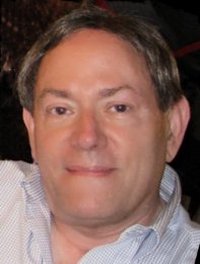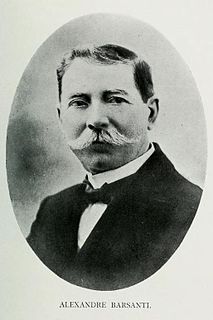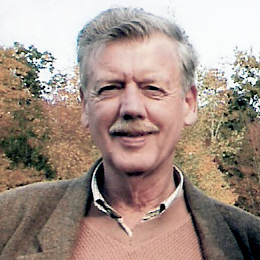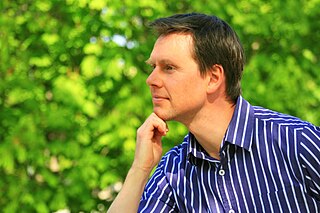 W
WJames Peter Allen is an American Egyptologist, specializing in language and religion. He was curator of Egyptian Art at the Metropolitan Museum of Art from 1990 to 2006. In 2007, he became the Charles Edwin Wilbour Professor of Egyptology at Brown University. In 2008, he was elected president of the International Association of Egyptologists. A graduate of Saint Meinrad Seminary and School of Theology, he received his PhD from the University of Chicago.
 W
WAlessandro Barsanti (1858–1917) was an Italian architect and Egyptologist who worked for the Egyptian Antiquities Service. He excavated throughout Egypt. He was also in charge of the transfer of collection of the Cairo Museum from its site at Giza to the current location in Cairo itself.
 W
WGuy Brunton OBE was an English archaeologist and Egyptologist who discovered the Badarian predynastic culture. He married Winifred Newberry on 28 April 1906. Her father built Prynnsberg Estate. He served in the First World War and returned to archaeology becoming assistant director of the Cairo Museum in 1931, he retired to South Africa.
 W
WÉmile Gaston Chassinat was a French Egyptologist. Director of the French Institute for Oriental Archaeology in Cairo in Cairo from 1898/9 to 1911/2, Chassinat acquired two of the Amarna tablets in 1903.
 W
WGeorge Somers Clarke (1841–1926) was an architect and English Egyptologist who worked at a number of sites throughout Egypt, notably in El Kab, where he built a house. He was born in Brighton.
 W
WBendix Ebbell was a Norwegian theologian and physician.
 W
WAhmad Fakhry was an Egyptian archaeologist who worked in the Western desert of Egypt, and also in the necropolis at Dahshur.
 W
WHermann Grapow was a German Egyptologist.
 W
WSelim Hassan was an Egyptian Egyptologist. He wrote the 16-volume Encyclopedia of Ancient Egypt in Arabic and supervised the excavation of many ancient Egyptian tombs under the auspices of Cairo University. He studied under Kamal at the Higher Teachers College in Cairo and began teaching in 1921. He later studied in Paris at the Ecole Pratique des Hautes Etudes. He was the first native Egyptian to be appointed Professor of Egyptology at the University of Cairo, a post he held from 1936 to 1939. He was then made Deputy-Director of the Antiquities Service. He received a PhD from Vienna in 1935.
 W
WArthur Surridge Hunt, FBA was an English papyrologist.
 W
WSergei Simeonov Ignatov is a Bulgarian Egyptologist and politician, minister of education, youth and science from November 2009 to 28 January 2013.
 W
WJean-Baptiste Prosper Jollois was a French engineer who together with Édouard de Villiers du Terrage journeyed with Napoleon to Egypt, and prepared the Description de l'Égypte.
 W
WFernand Bisson de La Roque was a French Egyptologist and archaeologist. His notable excavations include 1921 to 1924 at Djédefrê pyramid at Abu Rawash, 1925 to 1932 at the Temple of Monthu at Medamud, northeast of Thebes and 1933 to 1950 at the Temple of Monthu at Tod southeast of Thebes.
 W
WConradus Leemans was a Dutch Egyptologist.
 W
WJean-Baptiste Lepère was a French architect, father-in-law of the architect Jacques Hittorff. He was the designer of the church of Saint-Vincent-de-Paul, Paris, largely revised by Hittorf during its protracted execution, and one of the architects who worked on raising the colonne Vendôme.
 W
WRichard A. Lobban, Jr., husband of Dr. Carolyn Fluehr-Lobban, is an anthropologist and early pioneer in social network modeling, archaeologist, Egyptologist, and Sudanist, foreign policy expert, human rights activist, mentor, father, and beekeeper. He is Professor Emeritus of Anthropology and African Studies at Rhode Island College, Providence, Rhode Island since 1972; also a lecturer at the Archaeological Institute of America and the Naval War College. He is an expert in Ancient Sudan and Ancient Egypt, with a particular focus on Nubia. He is a co-founder of the Sudan Studies Association.
 W
WVictor Clement Georges Philippe Loret was a French Egyptologist.
 W
WEugène Revillout was a French Egyptologist.
 W
WHelmut Satzinger is an Austrian Egyptologist and Coptologist. He studied Egyptology, Arabic Philology and African Languages at the University of Vienna and, for 1 year, at Cairo University. Immediately after obtaining his PhD degree in 1964, he became commissioned to catalogue and publish Coptic papyri in the West Berlin section of the Egyptian Museum of Berlin.
 W
WKurt Heinrich Sethe was a noted German Egyptologist and philologist from Berlin. He was a student of Adolf Erman. Sethe collected numerous texts from Egypt during his visits there and edited the Urkunden des ægyptischen Altertums which is a standard catalogue of Ancient Egyptian literature and text.
 W
WFather Claude Sicard (1677–1726) was a French Jesuit priest, and an early modern visitor to Egypt, between 1708 and 1712, producing the earliest known map of the country.
 W
WCount Michał Tyszkiewicz (1828–1897) was a Polish-Lithuanian nobleman collector of antiquities and amateur Egyptologist. He was a member of the Polish Tyszkiewicz family.
 W
WÉdouard de Villiers du Terrage was a French engineer who together with Jean-Baptiste Prosper Jollois journeyed with Napoleon to Egypt, and prepared the Description de l'Égypte.
 W
WWolfhart Westendorf was a German Egyptologist. He was a student of Hermann Grapow, and with him, was a co-author of the Grundriss der Medizin der alten Ägypter, the most extensive study of the subject of ancient Egyptian medicine done in any language. He has also published many other books on Egyptology and the ancient Egyptian language.
 W
WToby A. H. Wilkinson is an English Egyptologist and academic. He is the Head of the International Strategy Office at the University of Cambridge, a fellow of Clare College, Cambridge, and was previously a research fellow at Christ's College, Cambridge and Durham University. He was awarded the 2011 Hessell-Tiltman Prize.